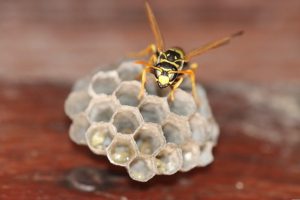Discovering a pest infestation in your home can be an alarming and stressful experience. Whether it’s ants in the kitchen, mice in the basement, or termites in the walls, pests can pose significant risks to both your property and your health. Addressing the problem promptly and effectively is crucial to prevent further damage and ensure a safe living environment. In this guide, we’ll provide you with essential tips and strategies to help you handle a pest infestation, including identifying the signs, choosing the right treatment methods, and when to call in professional help.
Identifying Common Pests
The first step in dealing with a pest infestation is to accurately identify the type of pest you’re dealing with. Common household pests include insects like ants, cockroaches, and termites, as well as rodents such as mice and rats. Each type of pest leaves distinct signs, such as droppings, damage to food packaging, or visible nests. Being able to recognize these signs will help you determine the most effective treatment and prevention methods for your specific situation.
To identify pests effectively, consider conducting a thorough inspection of your home. Pay special attention to areas where pests are likely to hide, such as kitchens, basements, and attics. Additionally, using pest identification guides or consulting with a pest control service can provide you with more detailed information on the specific characteristics of different pests. Correctly identifying the pest will ensure that you use the most appropriate and targeted treatment methods.
Preventative Measures
Prevention is always better than cure when it comes to pest infestations. Simple measures such as keeping your home clean, sealing cracks and gaps, and storing food in airtight containers can go a long way in deterring pests. Regularly disposing of garbage, especially food waste, can also help keep pests at bay. Additionally, installing screens on windows and doors can prevent outdoor pests from entering your home.
Another crucial preventative measure is maintaining your home’s exterior. Ensure that there is no standing water around your house, as this can attract mosquitoes and other pests. Keep gutters clean and well-maintained to prevent water buildup. Trimming trees and shrubs away from your home can also reduce the risk of pests using them as bridges to gain entry. Implementing these preventative steps can help protect your home from potential infestations.
Choosing the Right Treatment Methods
Once you have identified the pests, selecting the appropriate treatment method is crucial. Different pests require different approaches; for example, baits and traps are commonly used for rodents, while insecticides or natural remedies can be effective against insects. It’s important to carefully read and follow the instructions on any pest control products to ensure their effectiveness and safety.
Chemical treatments are not always the best option, especially if you have children or pets at home. In such cases, consider exploring natural or non-toxic alternatives, such as diatomaceous earth for insects or ultrasonic repellers for rodents. Researching and choosing the right treatment can make a significant difference in successfully eliminating the infestation while minimizing risks to your household.

Dealing with a pest infestation can be challenging, but with the right knowledge and strategies, it is possible to effectively manage and eliminate the problem. By accurately identifying the pests, implementing preventative measures, and selecting appropriate treatment methods, you can safeguard your home against unwanted intruders. Remember that persistence is key; maintaining a clean and well-maintained living environment is crucial in preventing future infestations.

Recent Comments